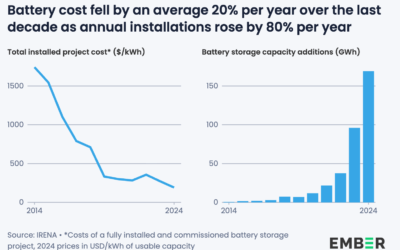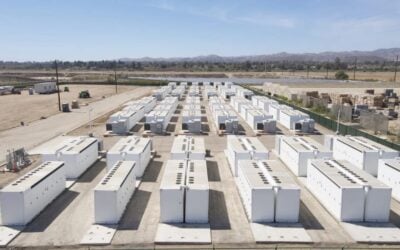The second of Lazard’s Levelized Cost of Storage Analysis compares the costs of various energy storage technologies in detail across different segments. Credit: Lazard
The cost of energy storage technologies is set to reduce significantly over the next five years driven by economies of scale and improvements in both technology and standardisation, according to a new report from financial advisory and asset management firm Lazard.
The second of Lazard’s Levelized Cost of Storage Analysis compares the costs of various energy storage technologies in detail across different segments in terms of capital cost and LCOE. The analysis was conducted with support from Enovation Partners.
The cost reductions will also be pushed forward by increased demand as regulatory environments improve, the penetration of renewables increases, and as ageing grids begin to need more support.
More demand for energy storage will also result in enhanced manufacturing scale. Meanwhile, the increasing deployment of both renewables and storage will create a mutually beneficial growth cycle where one technology’s success supports the other.
Try Premium for just $1
- Full premium access for the first month at only $1
- Converts to an annual rate after 30 days unless cancelled
- Cancel anytime during the trial period
Premium Benefits
- Expert industry analysis and interviews
- Digital access to PV Tech Power journal
- Exclusive event discounts
Or get the full Premium subscription right away
Or continue reading this article for free
However, the extent of cost reductions in the five-year period has seen a mix of projections. Lazard cited some industry members forecasting lithium, flow and lead battery capital cost declines of around 40%. Lazard said cost reductions for lithium are already well underway since last year.
Ultimately it will be manufacturing and engineering improvements in batteries rather than balance of system (BOS) costs that drive the cost reductions.
Another key takeaway from Lazard was that some technologies are increasingly attractive for a number of specialised power grid uses, but not all uses are economically attractive right now. The main use at present is to strengthen the power grid through frequency regulation, transmission and distribution investment deferral. Another main use is to reduce energy bills for commercial and industrial energy users.
The report stated: “Energy storage appears most economically viable in use cases that require relatively greater power capacity and flexibility as opposed to energy density or duration.”





